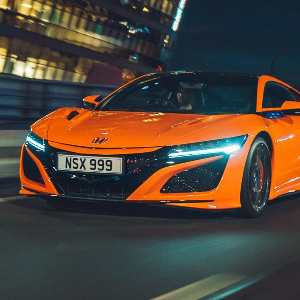
Toyota applies its trusted hybrid tech to a large seven-seat SUV. But does the Toyota Highlander justify its hefty list price?
PROS:
+ Decent fuel economy
+ Great interior space
+ Loads of standard kit
CONS:
- Hefty price
- Infotainment system
- Not much personalisation
Verdict: The Toyota Highlander is a comfy, quiet, efficient and well-equipped large SUV that seats seven people. It's pricey, though, and doesn't have the interior quality of the premium rivals Toyota want it to steal sales from.
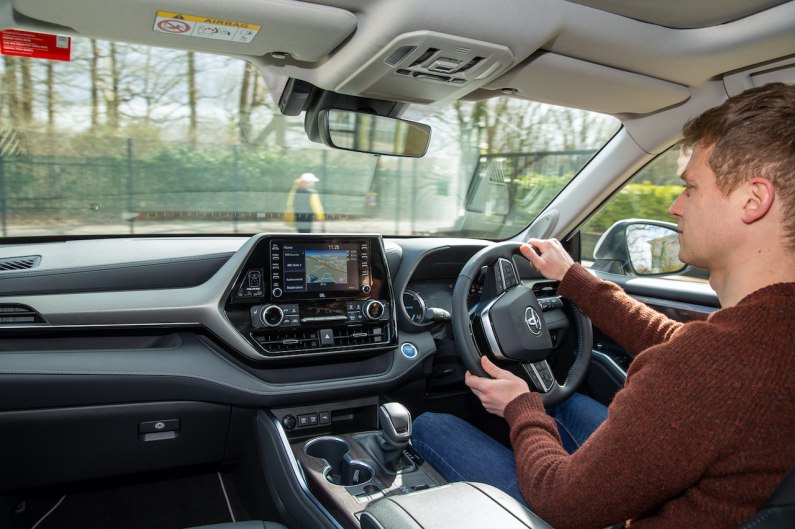
2021 Toyota Highlander review: the five-minute read
Toyota can do nothing wrong at the moment. Its latest Corolla is brilliant, its Yaris now one of the best small cars, the Prius continues to sell like hotcakes and the C-HR is turning heads in a crowded small SUV class. So, this Toyota Highlander should be superb, then?
Well, we'll get to that, but first, know that it's a large SUV capable of seating seven people. It comes with petrol-electric hybrid power only and needs to tempt buyers away from big-value SUVs like Kia Sorento and Hyundai Santa Fe, but also more premium ones such as the Volvo XC90 due to its hefty £50,000 price tag. It’s also not far off the asking price of a Land Rover Discovery.
It should at least attract some attention with those looks. The Highlander is one of the more aggressive-looking models from Toyota, with that gaping dark grille, sleek LED headlights and building wheel arches giving it a stout stance that justifies its price. Can you spot some Supra DNA in that l sweeping line along it’s length?
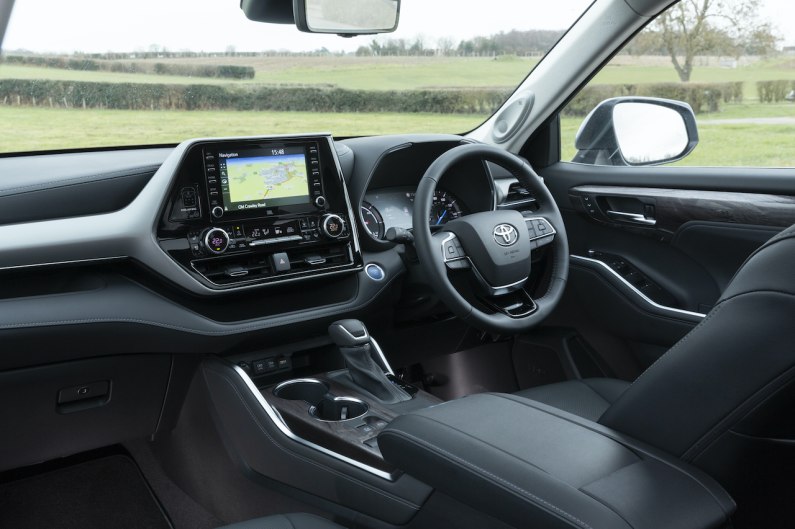
Inside things are a little more conservative. There's nothing wrong with the Highlander's build quality, which is extremely solid, but there's nothing that helps it stand out versus Kia and Hyundai, let alone Volvo. The interior also barely changes in look and feel across the two available trim levels and there are no personalisation options.
The Highlander’s infotainment system also leaves you wanting thanks to a lacklustre operating system. Sure, it has plenty of functionality, but cluttered menus and the graphical capacity of Windows XP is far less impressive than the considerably slicker offerings from key rivals. We are fans of the handy shortcut buttons that run down its bezel, and our gripes with the system are largely addressed by Apple CarPlay and Android Auto compatibility.
The Highlander holds its own far better in terms of space. Front space is huge, even the tallest adults can stretch out in the outside middle row seats and another couple of adults will be comfy enough in the third row too. Plus there's a massive boot behind.
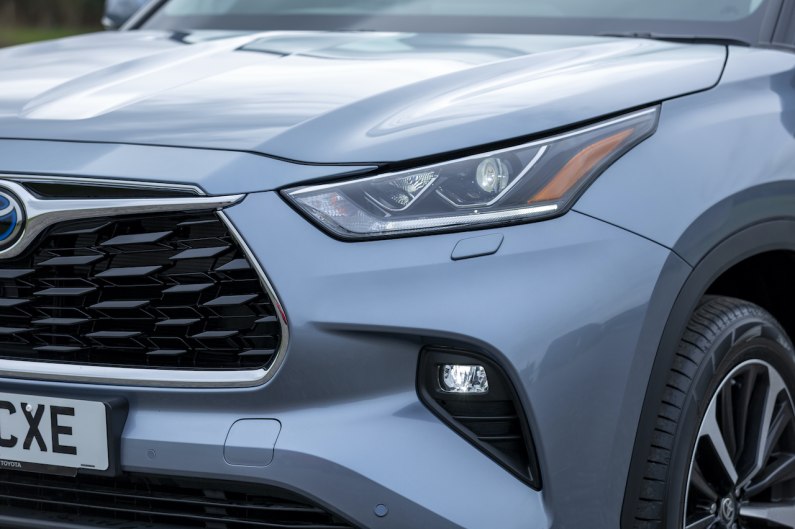
Toyota knows a thing or two about hybrids, so it makes sense for the Highlander to be one, although that's your only choice. The combination of a 2.5-litre petrol engine battery and electric motor works well, proving easily strong enough for every type of road, quiet and efficient - we saw 42mpg without having to try very hard.
The Highlander doesn't like to be hustled down a country road too quickly, rather it's good at loping along being comfy and quiet - especially in town, where it largely runs on electricity. Things only start to get a little noisy when you're on the motorway where there's some wind noise around the door mirrors.
So, the Highlander is spacious, quiet, comfy, efficient and comes stacked with standard equipment. But there's a slight issue: its price. Starting at around £50,000 the Highlander makes a Sorento and Santa Fe look far better value, plus you can have an XC90 for very similar money if you compare lease deals.
For great Toyota Highlander deals click here
Extended read…
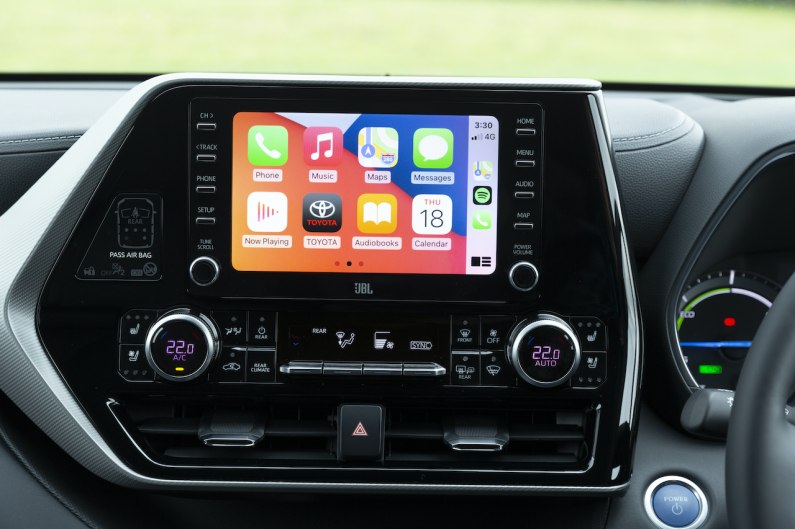
2021 Toyota Highlander interior and infotainment
The Toyota Highlander is priced to compete with premium competition, so its interior needs to feel plush. Sadly, it doesn't quite hit the mark.
There's nothing wrong with the build quality, which is extremely solid, but there's nothing that helps it stand out versus Kia and Hyundai, let alone Volvo. The interior also barely changes in look and feel across the two available trim levels and there are no personalisation options.
It is a very practical interior in terms of storage, though. The door bins are huge front and back, so's the glove box and there's a massive cubby beneath a sliding lid on the armrest between the front seats. Inside you can move a tray to customise the space too.
The 8-inch infotainment system that sits surrounded by a pleasing number of physical buttons is about on par with rivals when it comes to screen size, but the software it runs is no match for what you’d find in a Volvo or Land Rover. Navigating text-heavy menus becomes tiresome, and the dated graphics leaves much to be desired. Thankfully, all cars come with Apple CarPlay and Android Auto, allowing you to use a slick smartphone-based system that’s both functional and familiar.
The same goes for the Highlander's driver's dials, which are half analogue, half digital and present all the information you need, but aren't very configurable and look pretty unappealing next to the fully digital ones from available Kia, Hyundai and Volvo. At least all Highlander's come with a punchy JBL stereo system as standard that sounds very good indeed.
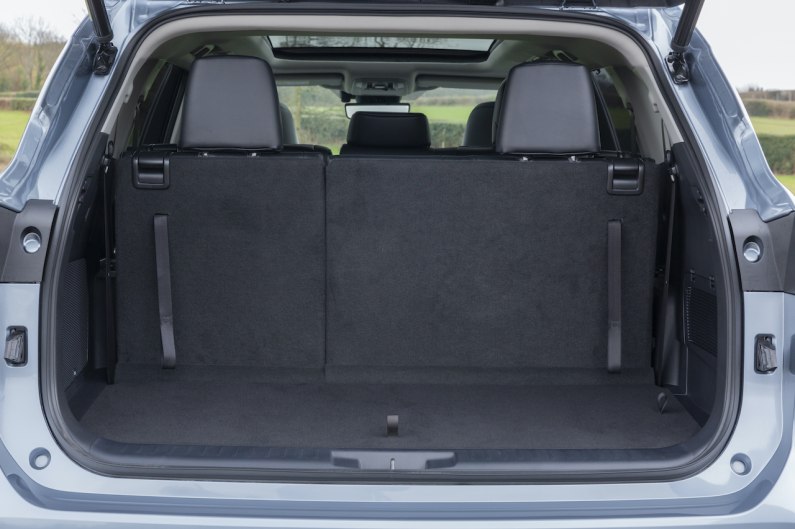
2021 Toyota Highlander practicality and boot space
Something the Highlander does very well is space, both for passengers and luggage.
Front row space is massive and there's plenty of electric adjustment for the driver to find the best driving position easily, while head and leg room in the middle row is vast too. A couple of tall adults will be able to stretch out on the sliding rear seats, and even three adults across the middle seats won't complain too much.
The rearmost seats are pulled from the floor via straps and accessing them through the rear doors after tipping the middle row forward is pretty simple. Adults will sit in the rear seats fine, although it will mean sliding the middle row forward slightly. Even then, three adults will be able to sit directly behind each other inside.
This ‘bigger is better’ mantra continues in the boot with a huge 658 litres of space at your disposal – that’s more than enough for a family trip away or a couple of sizeable dogs. Obviously, deploying the rear jump-seats takes up some of that space, but there’s still a respectable 332 litres available. Fold everything flat for a cathedral-like 1,909 litres, easily accommodating Billy Bookcase and his friends several times over.
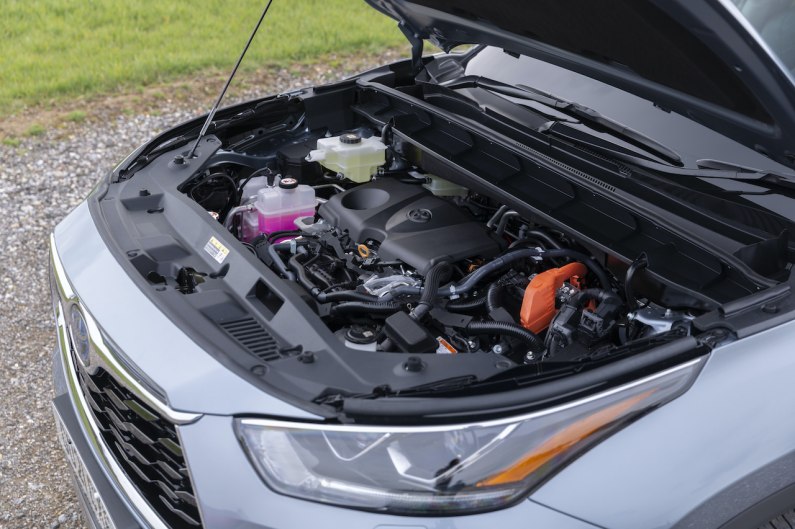
2021 Toyota Highlander engine
Toyota does a superb hybrid system, so it makes sense for the Highlander to get one, although that's your only choice. Unlike the Sorento or XC90, you can't have your Highlander with a diesel engine.
A plug-in hybrid model may be added later down the line but is yet to be confirmed, so for now, you get a standard hybrid that charges itself using its engine but can drive for short period on electricity alone.
Toyota's combination of a 2.5-litre petrol engine battery and electric motor works well, proving easily strong enough for every type of road, quiet and efficient - we saw 42mpg without having to try very hard.
The highlander is equipped with a CVT, something that contributes to the impressive economy of this big car. While considerably more hushed than previous iterations of the variable transmission, you are still greeted with that ‘mooing’ tone under heavy acceleration out of junctions or off slip roads. It’s not outrageous, but it remains a traditional gripe with CVTs. Toyota attempt to remedy this by allowing you to flick through several ‘simulated’ gears via the wheel mounted paddles, however, these proved largely redundant.
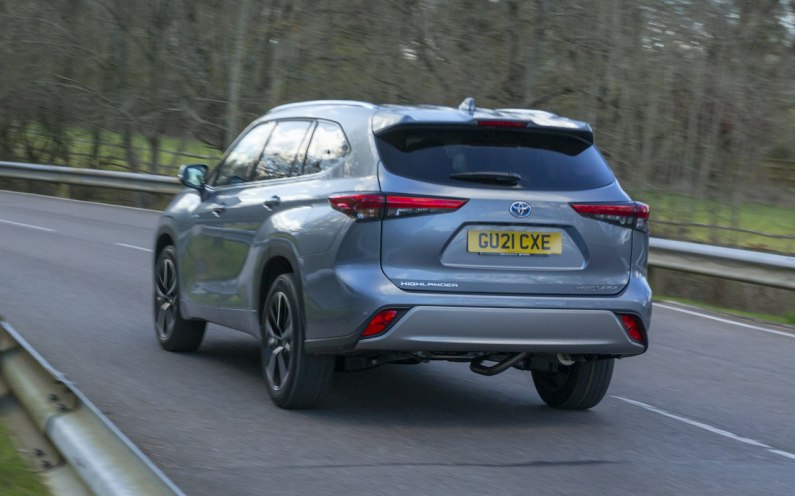
2021 Toyota Highlander driving
The Highlander is great at cruising around rather than hacking it down country lanes. In town, when running largely on electricity, it's almost silent and very comfy over bumps. Its light steering makes it easy to thread through traffic and standard front and rear sensors plus cameras make it easy to park such a big SUV.
The Highlander also has an EV driving mode, which with enough battery level, will keep the engine switched off for as long as possible. It's a useful feature if you want to save fuel in and around town.
Leaving the urban sprawl behind and heading onto more demanding roads highlights why the Highlander isn’t keen on being hustled along. The chassis provides plenty of grip, but the 4x4 can’t escape the laws of physics and the notable body roll that comes with being a tall vehicle. Its cushy suspension and light steering detach you from the drive, again highlighting a lack of sporting pretences here.
On the motorway, there's some wind noise around the door mirrors, but otherwise, the Highlander is comfortable transport over long distances. You also get Toyota's full adaptive cruise with lane keep and lane steering which works well and helps make motorway driving even more relaxing.
The Highlander is actually able to run on electricity alone at up to 78mph, although it's difficult to keep the engine from kicking in up at the legal limit.
